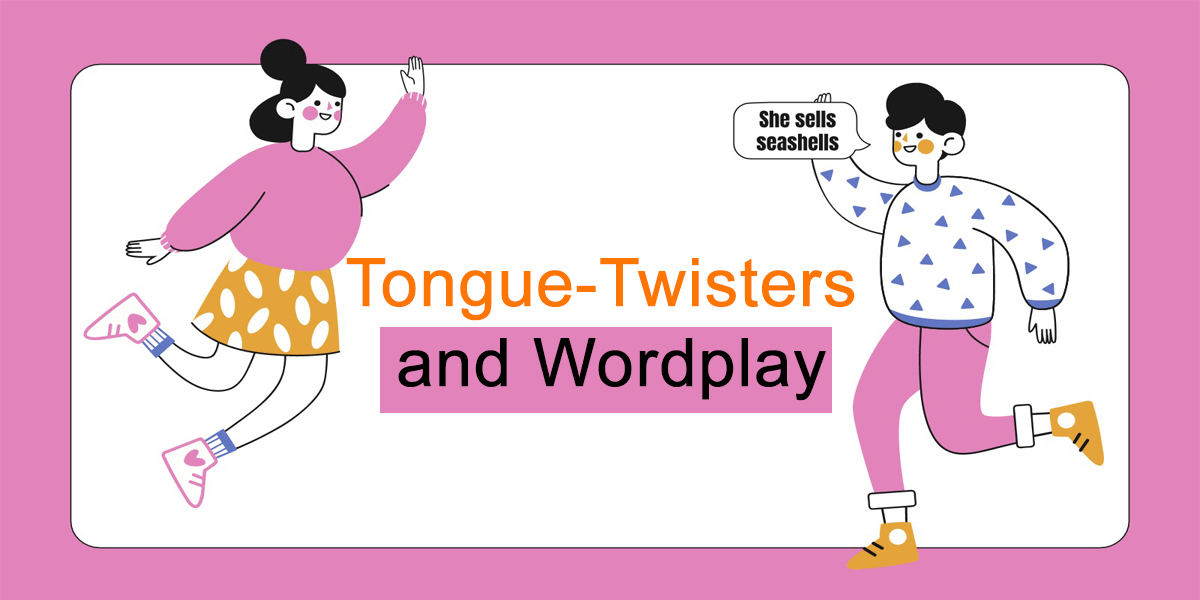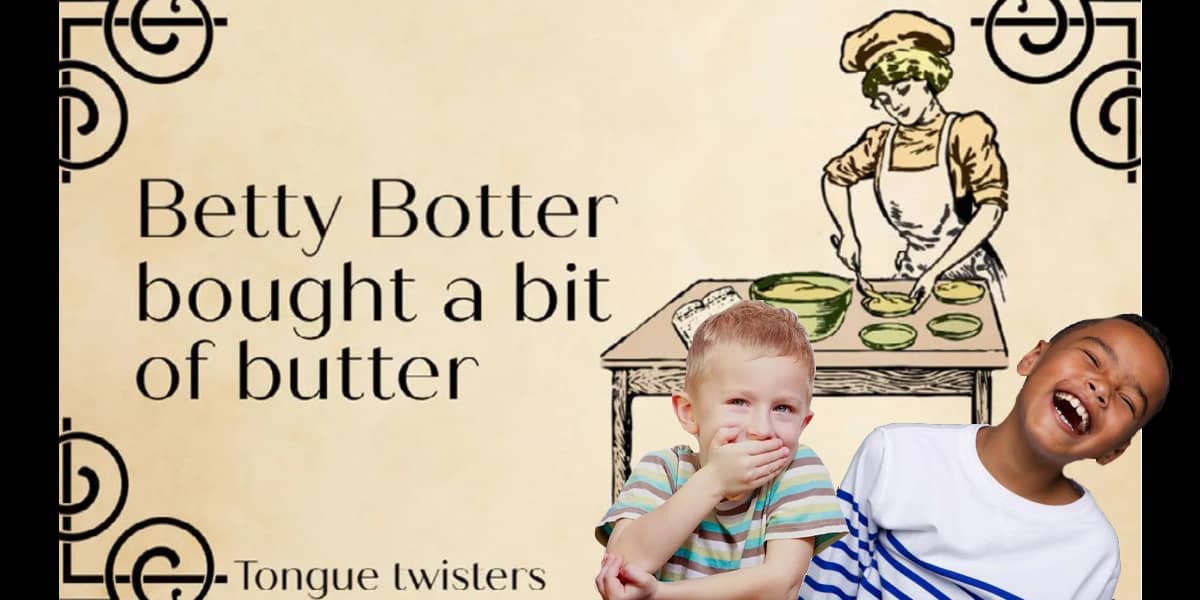Tongue-Twisters and Wordplay: Fun with Language Games and Quirky Phrases

Tongue-Twisters and Wordplay: Fun with Language Games and Quirky Phrases
Language is a fascinating realm that goes beyond its functional purpose of communication. It serves as a playground for entertainment, amusement, and linguistic exploration. Tongue twisters and wordplay are great language games that challenge our pronunciation skills, ignite our sense of humor, and reveal language’s creative and playful side. In this article, we embark on a captivating journey into tongue twisters and wordplay, delving into their origins, exploring different types, unraveling cultural variations, and uncovering their broader significance. Join us as we unlock the joy and laughter hidden within these quirky phrases and linguistic puzzles.
index
ToggleThe Art of Tongue-Twisters
Tongue twisters are phrases or sentences deliberately crafted to be challenging to pronounce. They often contain similar or repetitive sounds, putting our vocal dexterity to the test and demanding precise tongue, lips, and vocal cords coordination. Found in various languages and cultures across the globe, tongue twisters serve as a delightful linguistic challenge for people of all ages. From the iconic English tongue-twister “Peter Piper picked a peck of pickled peppers” to the tongue-twisting Japanese phrase “Shichimi togarashi” (a popular spice blend), these linguistic acrobatics demonstrate the remarkable possibilities that arise from skillfully combining sounds and words.
Types of Tongue-Twisters
Alliteration: Tongue twisters that rely on repeated consonant sounds, such as “She sells seashells by the seashore,” highlight the playful use of alliteration to create memorable and challenging phrases. The repetition of consonants adds a rhythmic quality to the tongue-twister and tests our ability to articulate similar sounds rapidly.
Rhyme: Rhyme-based tongue twisters employ words or sounds that rhyme, such as “How much wood would a woodchuck chuck if a woodchuck could chuck wood?” These tongue twisters explore the musicality of language and challenge our ears to distinguish between similar sounds while maintaining proper pronunciation.
Reduplications: Tongue twisters featuring repeated words or syllables, like “Fuzzy Wuzzy was a bear, Fuzzy Wuzzy had no hair,” require careful enunciation to avoid stumbling over the recurring elements. These tongue twisters add a part of rhythm and repetition, amplifying the difficulty level.
Minimal pairs: Tongue-twisters involving words with similar sounds but different meanings, such as “How can a clam cram in a clean cream can?” or “I scream, you scream, we all scream for ice cream,” test our ability to discern between similar sounds and meanings. These tongue twisters challenge our cognitive processing and linguistic acuity.
Cultural Variations
Tongue twisters transcend the confines of a specific language or culture. They showcase the diversity of languages and the unique phonetic patterns and linguistic features that define each. For example, the German tongue-twister “Fischers Fritz Fischer frische Fische, frische Fische Fisch Fischers Fritz” highlights the intricate sound combinations present in the German language. By exploring tongue twisters from different cultures, we gain a deeper appreciation for linguistic diversity and the specific challenges posed by various phonetic systems.
Wordplay and Puns
In addition to tongue twisters, wordplay and puns are another form of linguistic entertainment. They captivate us with their clever use of words, multiple meanings, and unexpected twists. Puns thrive on ambiguity or various interpretations of words, resulting in humorous or witty statements. For example, the pun “I used to be a baker, but I couldn’t make enough dough” plays on the double meaning of “dough” as both money and the raw mixture used in baking.
Wordplay and puns can be found in literature, advertising campaigns, jokes, and everyday conversations. They exemplify the flexibility and richness of language and showcase the human capacity for humor and linguistic creativity. Wordplay often involves inventive word combinations, such as portmanteaus (blending two words to create a new one, like “brunch” for breakfast and lunch) or spoonerisms (swapping the initial sounds of two words, like saying “tease my ears” instead of “ease my tears”).
Wordplay Across Cultures
Wordplay and puns are prevalent in many cultures and languages, each with unique word games and linguistic wit. For instance, in Chinese, “linguistic puzzles” known as “Chengyu” consist of four characters and convey a deeper meaning. Deciphering the hidden message or metaphorical significance behind these puzzles challenges the reader’s understanding and appreciation of the language.
Historical Significance
Tongue twisters and wordplay have a rich historical background. Ancient civilizations, such as the Greeks and Romans, indulged in language games and rhetorical exercises to improve public speaking skills. For example, the Roman poet Ovid composed intricate tongue twisters called “Malobolge” in his work “Ars Amatoria,” challenging readers to master their pronunciation.
Educational Value
Tongue twisters and wordplay have educational benefits beyond their entertainment value. They can be used as educational tools to enhance language skills, including pronunciation, articulation, phonemic awareness, and vocabulary expansion. Language teachers often incorporate tongue twisters and wordplay activities into their curriculum to engage students playfully and interactively.
Cognitive Benefits
Engaging in tongue-twisters and wordplay exercises stimulates cognitive processes such as memory, attention, and problem-solving. The brain must quickly process linguistic information, distinguish between similar sounds, and identify multiple meanings. Regular tongue twisters and wordplay practice can improve cognitive flexibility and linguistic agility.
Cultural Identities
Tongue twisters and wordplay reflect the cultural identities of different communities. They embody a language’s unique linguistic features, phonetic patterns, and cultural nuances. Exploring tongue twisters and wordplay from various cultures provides a window into their language, traditions, and values, fostering cross-cultural understanding and appreciation.
Creative Expression
Tongue twisters and wordplay offer a platform for creative expression. They encourage individuals to think outside the box, experiment with language, and play with words to create clever and amusing phrases. Writers, poets, and comedians often incorporate wordplay and puns into their works to engage and entertain their audiences, showcasing the power of linguistic creativity.
Conclusion
Tongue twisters and wordplay add a playful and creative dimension to language. They bring joy, laughter, and mental stimulation while showcasing words’ intricate phonetics, linguistic patterns, and versatility. Regardless of cultural or linguistic background, the universal appeal of tongue twisters and wordplay unites us in our love for linguistic puzzles. So, let’s wholeheartedly embrace the tongue-twisters and wordplay of different cultures, challenge ourselves to pronounce those tricky phrases, and relish the sheer delight of playing with language.
Recent Posts
Contact Us
+1 437 499 4559










